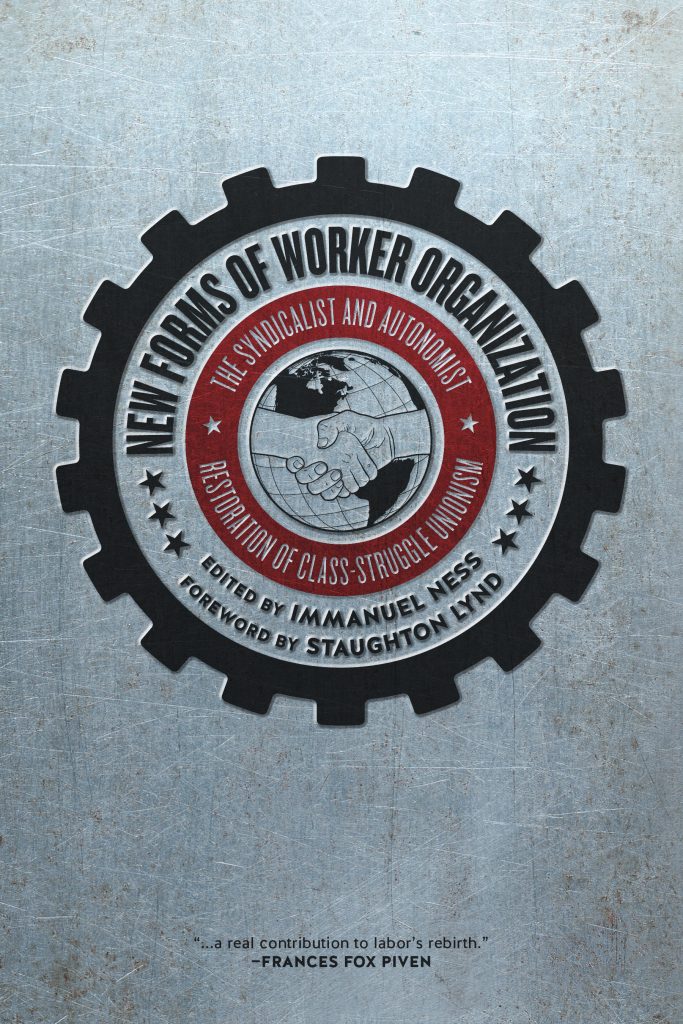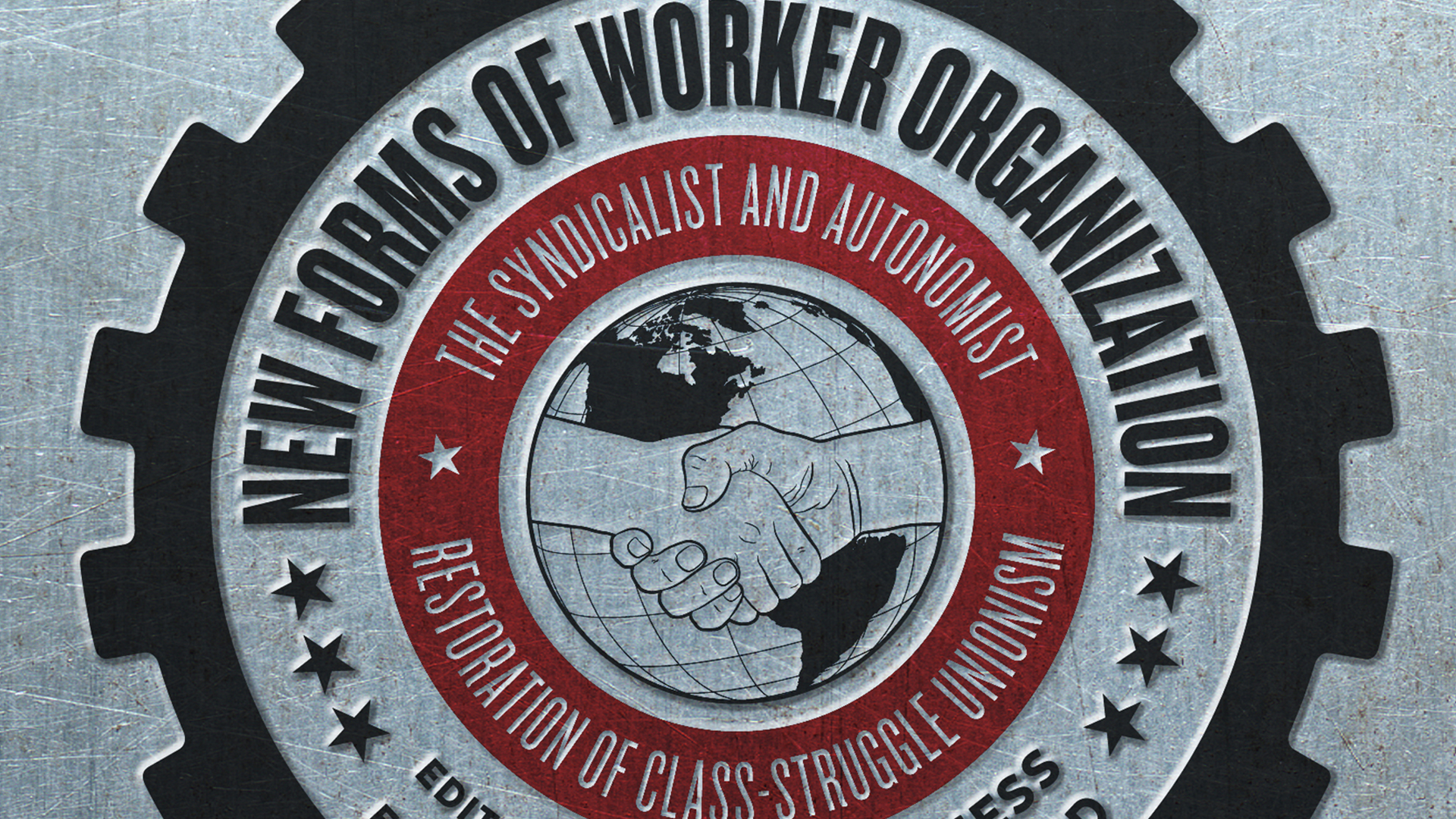
By Seth Sandronsky
The Progressive Populist
July 1st-15th, 2015
Changes are coming on the job. Case in point is New Forms of Worker Organization: the Syndicalist and Autonomist Restoration of Class-Struggle Unionism edited by Immanuel Ness (PM Press, 2014).
In 13 chapters, case studies contextualize workplace struggles across industries, e.g., from car factories in Russia and India to coal mines in Colombia and South Africa, natural habitats in Madagascar, and building sites in Australia. Ness’ book has three sections.
Autonomist unions (grassroots-centered) in Italy, China and Russia comprise the first section. Here and in sections two and three, workers and neighbors coalesce to take on employers, a capitalist state, bureaucratic unions and restrictive labor laws upholding the status quo. Steve Manicastri explores the autonomous workers’ movement in Italy. He details the arc of Confederazione dei Comitati di Base, or COBAs, for teachers and other occupations, in fighting the nation’s state-capitalist offensive against labor.
In a scintillating study, Chinese workers making athletic shoes strike over insufficient pensions and shelter. This labor action united older and younger workers. What China’s leading labor federation did (not) do during this conflict is instructive, given the government’s branding of itself as a workers’ state.
Au Loong Yu and Bai Ruixue unravel the arc of workers’ self-directed efforts in the face of party-state power after the Mao era.
In Russia, a former Communist Party leadership dominates the populace in the shift to capitalism. An employer-friendly Labor Code, write Piotr Bizyukov and Irina Olimpieva, sparks two “spontaneous resistance and organized offensive strategy,” with employers’ non- and tardy payment of wages lighting the fire of workplace actions.
The legacy of the International Workers of the World runs a red line in the pages of Ness’ book.
The Wobblies emerged in the early era of industrial capitalism in the global North. We are a long way from then, but the capital and labor conflict remains at the center of workplace conflicts. Section two highlights autonomous organizing and radical unions in the Global South. Two-tier wage rates spark employment conflict in case studies of self-directed labor dissent in India and South Africa. Readers will gain a better grasp of the particular situations, given the paucity of Western press coverage. In South Africa, labor maltreatment is the rule, despite the fall of apartheid. Nowhere is this more evident than in the platinum industry. Workers form assemblies from 2009 onward to win higher pay and safer workplaces, Shawn Hattingh writes. These pay increases reach the workers on the lowest rungs of the wage ladder. The South African business-union-government triad uses lethal force, e.g., the 2012 killings of striking Marikana mine workers, in a bid to quell such dissent.
Arup Kuma Sen maps out India’s precarious workers at Maruti Suzuki in an auto factory that produces one car every 12 seconds. They organize against speedup conditions on the line, plus a two-tier employment structure, demanding equal pay for part- and full-time workers. Unequal pay for equal work that unites employees to act collectively and independently is a recurring theme in the book. Section three unpacks independent organizing and militant unions in Sweden, Australia, the US and UK. In the Global North, capital flight drives the rise of service jobs. Still, capitalists accumulate profits by paying service employees less than their labor creates.
Erik Forman’s study of IWW organizing at Jimmy John’s in Minneapolis sheds light on useful strategies and tactics these sandwich workers use to combat tyrannical bosses. Professional union organizers are not part of his case study of this slice of the fast food industry. Forman stands alone among the contributors as a worker directly involved in shop floor actions. In the shadows of Starbucks youthful workers’ actions for higher pay as a major if unstated precursor to the Fight for $15 hour minimum wage movement funded by trade unions sweeping the USA, Ness critiques US trade union leadership. It has, according to him, disempowered the US working class over the past four decades, pursuing a defensive trend of concessions to capital, and coming to resemble the corporate foes hammering labor.
New Forms of Worker Organization delivers intriguing cases of capital and labor clashing in the 21st century. The parallels to a century ago are stark, economically and politically. Accordingly, the case studies prefigure a local and global politics. It aspires to a democracy that has at its core economic democracy centered on the workplace.
Seth Sandronsky is a Sacramento journalist and member of the freelancers unit of the Pacific Media Workers Guild.






